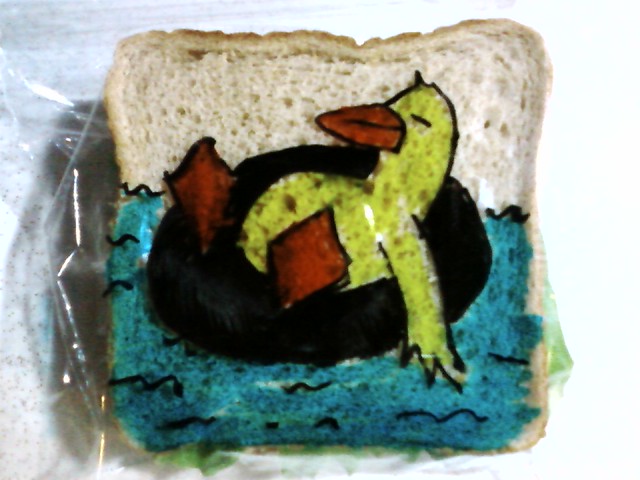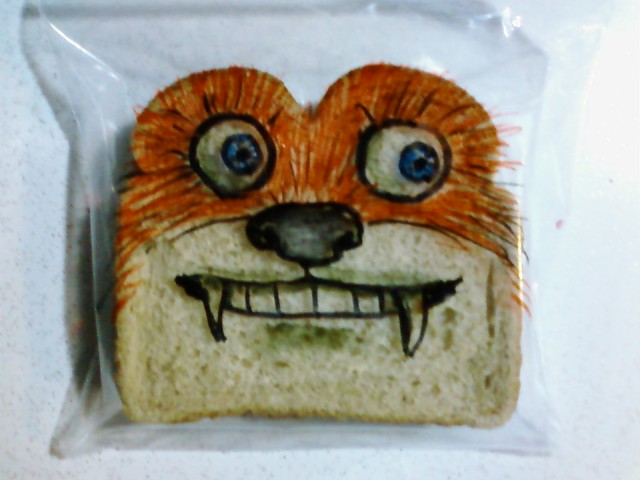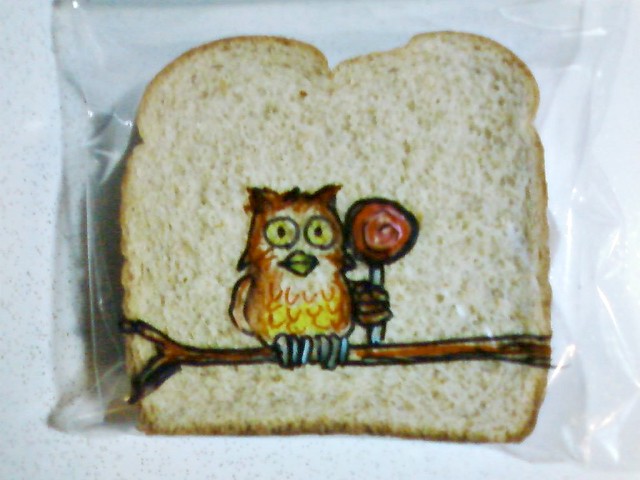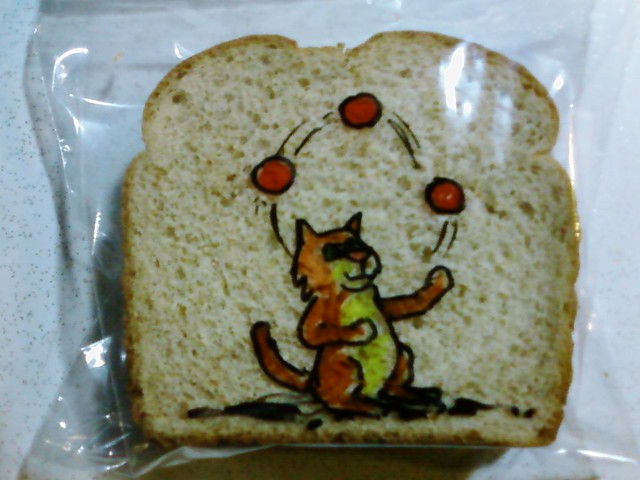 You probably already cook with coconut oil. Maybe you enjoy big flakes of toasted coconut in your trail mix or shredded coconut in your grain-free Primal “oatmeal.” But have you tried the richest, most decadent coconut product of them all: coconut butter?
You probably already cook with coconut oil. Maybe you enjoy big flakes of toasted coconut in your trail mix or shredded coconut in your grain-free Primal “oatmeal.” But have you tried the richest, most decadent coconut product of them all: coconut butter?
What is coconut butter, you ask? It’s simply dried coconut blended until it forms a smooth, creamy paste. Since the only ingredient is coconut, it’s naturally dairy-free and gluten-free.
Our favorite way to enjoy it is making the world’s easiest two-ingredient keto treat: dark chocolate with a schmear of coconut butter. Or just eat it with a spoon. We’ll never tell.
How to Make Coconut Butter
Servings: 1 to 2 cups
Time in the kitchen: 10 to 20 minutes
Ingredients
4 or more cups of unsweetened, dried coconut flakes
Directions
There’s only one necessary step: blend!
But if you want to make the best coconut butter ever, follow these 10 no-fail tips.
10 Tips for Making the Best Coconut Butter Ever
Tip #1: Use large unsweetened dried coconut flakes. These are easier to turn into butter.

Tip #2: For a deeper, nuttier flavor, toast the coconut.
Lay the coconut out on a sheet pan and place in the oven at 300 degrees Fahrenheit (150 degrees Celsius) until the coconut is lightly brown and toasted. This elevates the flavor of the coconut butter, and it will also make it easier to turn the flakes into butter.
This is not a necessary step, but if you have a weak food processor, it might be a better option. If you choose to toast the coconut, the final product will be light brown instead of white, as shown in the photos later in the post.

Tip #3: Use at least 4 cups of coconut flakes and place them into a food processor.
You can also use a high-speed blender, but a food processor typically makes it easier to scrape down the sides and remove the coconut butter when it’s done processing. Blenders will make a somewhat smoother finished product, but some blenders will overheat before you’re done blending the coconut.
Tip #4: Take your time! It takes anywhere from 10 to 20 minutes to get a nice smooth butter.
Tip #5: Once you turn the food processor on and let it begin to grind the coconut, stop every so often to scrape the sides of the bowl with a spoon or spatula to pick up any flakes on the sides.

Tip #6: The coconut flakes will go through multiple transformations as it turns to butter. First they will look like coarse sand.

Next, it will become liquid-y but still look grainy.

Last, it will be a smooth, thick sauce. The end result will still be thin, but it will firm up as you store it.
Tip #7: Pour the butter into an airtight jar and let it cool. Optionally, store it into multiple small containers, which makes it easier to warm up and use later on.
Tip #8: Coconut butter can be stored at room temperature, but keep in mind that toasted coconut butter will go rancid much more quickly than non-toasted. Consequently, we recommend storing toasted coconut butter in the fridge.
Tip #9: Coconut butter hardens at cooler temperatures. To use hardened butter, set up a warm water bath and let the jar sit in it for a few minutes to help soften the butter, stirring occasionally. We don’t recommend directly heating or microwaving the butter as this can mess with its consistency, but you can do it in a pinch!
Tip #10: Use the coconut butter for almost anything! We love dunking fruit or nuts in softened butter. Try adding a spoonful to savory options like curries, soups, or even to mashed veggies.

The post How to Make Coconut Better: 10 Tips for the Best Coconut Butter Ever appeared first on Mark's Daily Apple.
 Brian Ashcraft at Kotaku blogs about a neat idea for a hair style from a stylist in Japan. It's called "Ripe Tomato" ("kanjuku tomato" or 完熟トマト), and was created by "Hiro" at a salon in Osaka called "Trick Store", in the trendy Amemura district. Read: You'll Never Forget Japan's Tomato Hairdo.
Brian Ashcraft at Kotaku blogs about a neat idea for a hair style from a stylist in Japan. It's called "Ripe Tomato" ("kanjuku tomato" or 完熟トマト), and was created by "Hiro" at a salon in Osaka called "Trick Store", in the trendy Amemura district. Read: You'll Never Forget Japan's Tomato Hairdo.
































 You probably already cook with
You probably already cook with 








 Careful what you wish for: Along with the more seasonable, warmer weather comes the release of tree pollen that yellows everything in its range – which is everywhere – and sneaks up noses to cause mass attacks of sneezing, wheezing and general yuckiness. Because cold weather lasted so long this year, the transition to allergy season was abrupt.
For perspective, the N.C. Division of Air Quality counted five pollen counts by cubic member on Friday. On Monday, the number was 750.
Gazuntite!
Careful what you wish for: Along with the more seasonable, warmer weather comes the release of tree pollen that yellows everything in its range – which is everywhere – and sneaks up noses to cause mass attacks of sneezing, wheezing and general yuckiness. Because cold weather lasted so long this year, the transition to allergy season was abrupt.
For perspective, the N.C. Division of Air Quality counted five pollen counts by cubic member on Friday. On Monday, the number was 750.
Gazuntite!

 BikeSpike BikeSpike The BikeSpike tracks your bike's location and lets you know if it's moved from its parking spot--or even if it's been tampered with. Only five hours left to fund it on Kickstarter.
BikeSpike BikeSpike The BikeSpike tracks your bike's location and lets you know if it's moved from its parking spot--or even if it's been tampered with. Only five hours left to fund it on Kickstarter.  Verschneite Landschaft Wikimedia Commons,
Verschneite Landschaft Wikimedia Commons, 
 What was once a master suite of an apartment in the Montparnasse neighborhood is now a 130 square foot micro apartment that houses all of the necessities. There’s even an extremely creative way to house the mattress-slash-sofa. The bed doubles as seating space for lounging and entertaining, which rolls away discreetly underneath a set of steps on the floor. The Magis One stools add some much needed contemporary pizazz to the inner environment, while the storage really looks like art and functions just perfectly.
What was once a master suite of an apartment in the Montparnasse neighborhood is now a 130 square foot micro apartment that houses all of the necessities. There’s even an extremely creative way to house the mattress-slash-sofa. The bed doubles as seating space for lounging and entertaining, which rolls away discreetly underneath a set of steps on the floor. The Magis One stools add some much needed contemporary pizazz to the inner environment, while the storage really looks like art and functions just perfectly. ![The Crochet Coral Reef Project [25 pics] Crochet Coral Reef](http://farm5.staticflickr.com/4123/4885246125_3c3095eed7_b.jpg)
![The Crochet Coral Reef Project [25 pics] crocheted coral reefs (8)](http://twistedsifter.files.wordpress.com/2013/04/crocheted-coral-reefs-8.jpg?w=800&h=598)
![The Crochet Coral Reef Project [25 pics] The Hyperbolic Crochet Coral Reef](http://farm5.staticflickr.com/4055/5156967850_9e33700898_b.jpg)
![The Crochet Coral Reef Project [25 pics] crocheted coral reefs (3)](http://twistedsifter.files.wordpress.com/2013/04/crocheted-coral-reefs-3.jpg?w=598&h=800)
![The Crochet Coral Reef Project [25 pics] crocheted coral reefs (9)](http://twistedsifter.files.wordpress.com/2013/04/crocheted-coral-reefs-9.jpg?w=800&h=600)
![The Crochet Coral Reef Project [25 pics] crocheted coral reefs (4)](http://twistedsifter.files.wordpress.com/2013/04/crocheted-coral-reefs-4.jpg?w=800&h=600)
![The Crochet Coral Reef Project [25 pics] Hyperbolic Crochet Coral Reef, Science Gallery, Trinity College Dublin, March 2010](http://farm8.staticflickr.com/7069/6775536446_d47ff3114e_b.jpg)
![The Crochet Coral Reef Project [25 pics] crocheted coral reefs (5)](http://twistedsifter.files.wordpress.com/2013/04/crocheted-coral-reefs-5.jpg?w=598&h=800)
![The Crochet Coral Reef Project [25 pics] crocheted coral reefs (11)](http://twistedsifter.files.wordpress.com/2013/04/crocheted-coral-reefs-11.jpg?w=800&h=600)
![The Crochet Coral Reef Project [25 pics] close-up one](http://farm4.staticflickr.com/3156/2793014699_afa0f57eb2_b.jpg)
![The Crochet Coral Reef Project [25 pics] Crochet Coral Reef](http://farm6.staticflickr.com/5088/5275591397_4de3bacc50_b.jpg)
![The Crochet Coral Reef Project [25 pics] Crochet Coral Reef](http://farm6.staticflickr.com/5053/5423596680_337809bff9_b.jpg)
![The Crochet Coral Reef Project [25 pics] crocheted-coral-reefs-(1)](http://twistedsifter.files.wordpress.com/2013/04/crocheted-coral-reefs-1.jpg?w=600&h=800)
![The Crochet Coral Reef Project [25 pics] crocheted coral reefs (6)](http://twistedsifter.files.wordpress.com/2013/04/crocheted-coral-reefs-6.jpg?w=800&h=600)
![The Crochet Coral Reef Project [25 pics] crocheted coral reefs (2)](http://twistedsifter.files.wordpress.com/2013/04/crocheted-coral-reefs-2.jpg?w=600&h=800)
![The Crochet Coral Reef Project [25 pics] Hyperbolic Crochet Coral Reef, Science Gallery, Trinity College Dublin, March 2010](http://farm8.staticflickr.com/7046/6921652497_975c712f35_b.jpg)
![The Crochet Coral Reef Project [25 pics] Crochet Coral Reef](http://farm6.staticflickr.com/5171/5423584862_a39e7f1356_b.jpg)
![The Crochet Coral Reef Project [25 pics] crocheted coral reefs (12)](http://twistedsifter.files.wordpress.com/2013/04/crocheted-coral-reefs-12.jpg?w=600&h=800)
![The Crochet Coral Reef Project [25 pics] Crochet Coral Reef](http://farm9.staticflickr.com/8231/8591418577_6035ed0e87_c.jpg)
![The Crochet Coral Reef Project [25 pics] Crocheted Coral Reef detail](http://farm3.staticflickr.com/2002/1527718362_b6669491ee_b.jpg)
![The Crochet Coral Reef Project [25 pics] crocheted coral reefs (13)](http://twistedsifter.files.wordpress.com/2013/04/crocheted-coral-reefs-13.jpg?w=800&h=600)
![The Crochet Coral Reef Project [25 pics] Crochet Coral Reef](http://farm6.staticflickr.com/5217/5422975137_3e795c396b_b.jpg)
![The Crochet Coral Reef Project [25 pics] crocheted coral reefs (10)](http://twistedsifter.files.wordpress.com/2013/04/crocheted-coral-reefs-10.jpg?w=800&h=600)
![The Crochet Coral Reef Project [25 pics] Coral crochet](http://farm8.staticflickr.com/7115/7453880894_cd579c87b3_c.jpg)
![The Crochet Coral Reef Project [25 pics] crocheted coral reefs (7)](http://twistedsifter.files.wordpress.com/2013/04/crocheted-coral-reefs-7.jpg?w=800&h=600)
![The Crochet Coral Reef Project [25 pics] 3343486124 62d3c68182 b The Crochet Coral Reef Project [25 pics]](http://farm4.staticflickr.com/3371/3343486124_62d3c68182_b.jpg)
![The Crochet Coral Reef Project [25 pics] snowshoe land art simon beck 7 The Crochet Coral Reef Project [25 pics]](http://twistedsifter.files.wordpress.com/2012/12/snowshoe-land-art-simon-beck-7.jpg?w=800&h=673)
![The Crochet Coral Reef Project [25 pics] jim denevan giant beach sand art 10 The Crochet Coral Reef Project [25 pics]](http://twistedsifter.files.wordpress.com/2012/02/jim-denevan-giant-beach-sand-art-10.jpg?w=800&h=533)
 A House resolution supporting the creation of an official religion in North Carolina will never come to a vote, officials said Thursday.
A House resolution supporting the creation of an official religion in North Carolina will never come to a vote, officials said Thursday.
 Johnston County will become a merchandise mecca this June with a 30-mile yard sale stretching from Kenly to Benson.
Johnston County will become a merchandise mecca this June with a 30-mile yard sale stretching from Kenly to Benson.


 The City of Raleigh called on the wrecking ball Monday, tearing down the AMF Bowling building on Capital Boulevard to clear space for a new park.
City officials say they hope the project will spruce up the main gateway to Raleigh's downtown and spur commercial development along the stretch, located just inside the Beltline, which is currently lined with run-down buildings.
The City of Raleigh called on the wrecking ball Monday, tearing down the AMF Bowling building on Capital Boulevard to clear space for a new park.
City officials say they hope the project will spruce up the main gateway to Raleigh's downtown and spur commercial development along the stretch, located just inside the Beltline, which is currently lined with run-down buildings.
 Magicicada Wikimedia Commons The roar of the millions-strong Magicicada is due back on the east coast this summer--the first time in 17 years. Here's how to track it.
Magicicada Wikimedia Commons The roar of the millions-strong Magicicada is due back on the east coast this summer--the first time in 17 years. Here's how to track it.  State lawmakers are considering making divorces harder to get in North Carolina.
State lawmakers are considering making divorces harder to get in North Carolina.